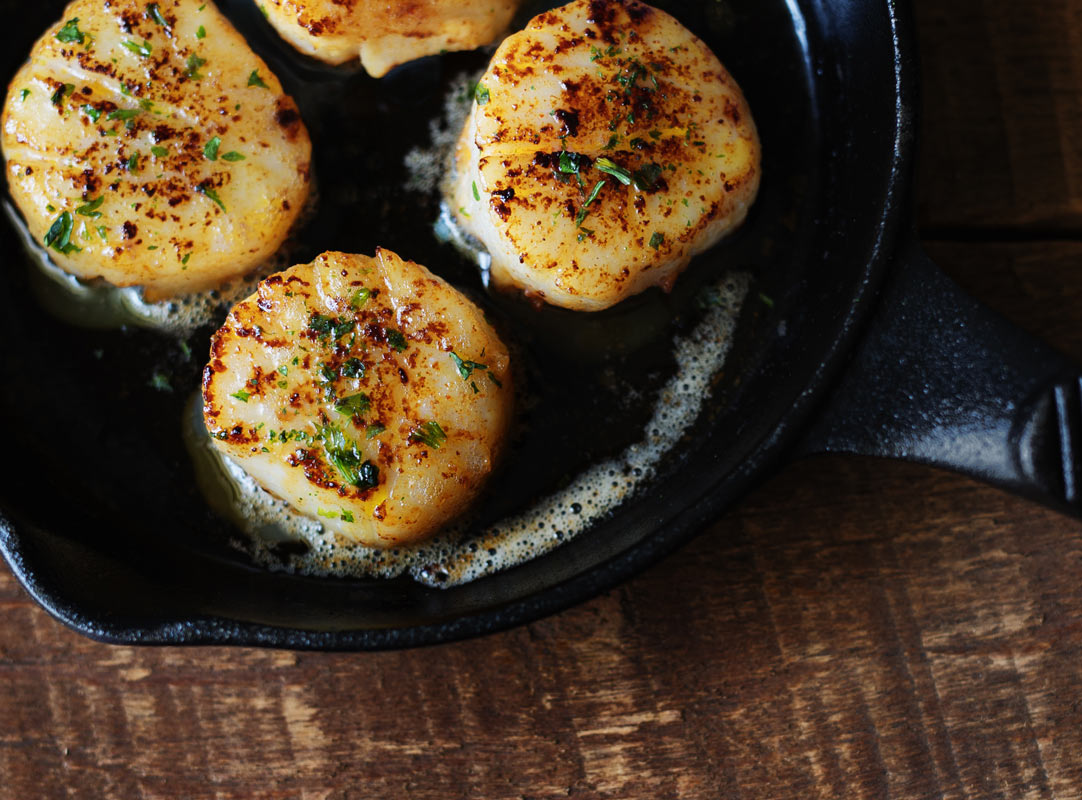This dish comes together in short order yet makes for an elegant presentation. The technique also lends itself to shrimp (if you make that swap, use one pound of peeled shrimp).
Ingredients
- 1 tablespoon onion powder
- 1 tablespoon garlic powder
- 2 teaspoons sweet paprika
- 1/2 teaspoon fine sea salt
- 1/2 teaspoon freshly ground black pepper
- 1 pound dry sea scallops
- 3 tablespoons extra virgin olive oil
- 2 garlic cloves, minced
- 1/2 cup white wine or clam juice
- 2 tablespoons butter
- 2 cups cooked farro
- 2 tablespoons chopped fresh flat-leaf parsley
Directions
Step 1
Mix the onion powder, garlic powder, paprika, salt, and pepper in a pie plate. Heat a large skillet. While the pan is heating, pat the scallops with a paper towel and dredge in the spice mixture. When the pan is ready, add the olive oil and the scallops. Sear the scallops until browned and crispy on the edges, about two minutes on each side, then transfer them to a dish.
Step 2
Add the minced garlic to the pan and sauté until soft, about 3 minutes. Deglaze the pan with the wine or clam juice and add the butter, swirling it until it melts into the pan juices. Add the cooked farro and toss to coat. Sprinkle with the parsley. Mound equal amounts of the farro on 4 plates and add equal amounts of scallops.
Yields 4 servings




